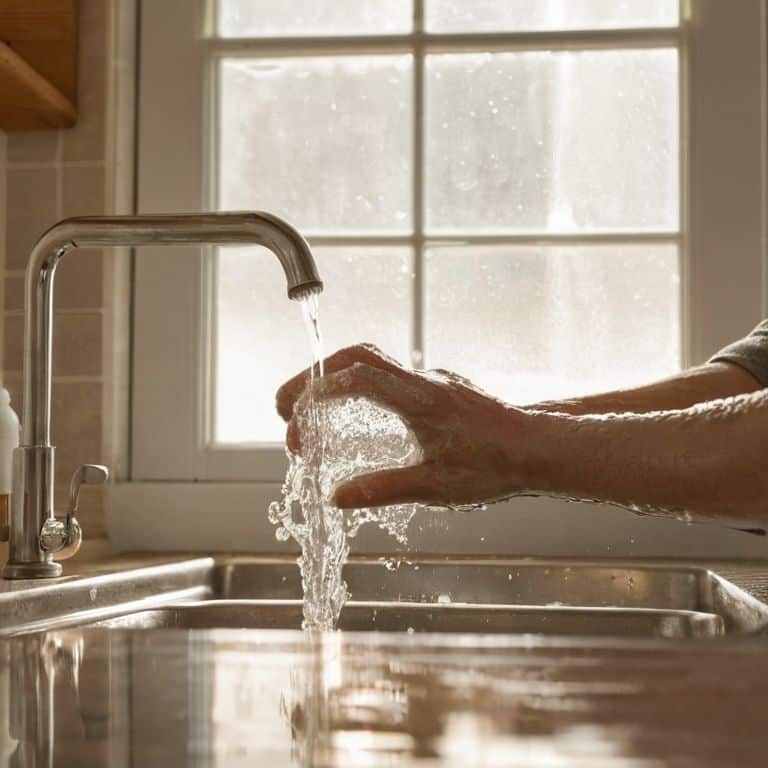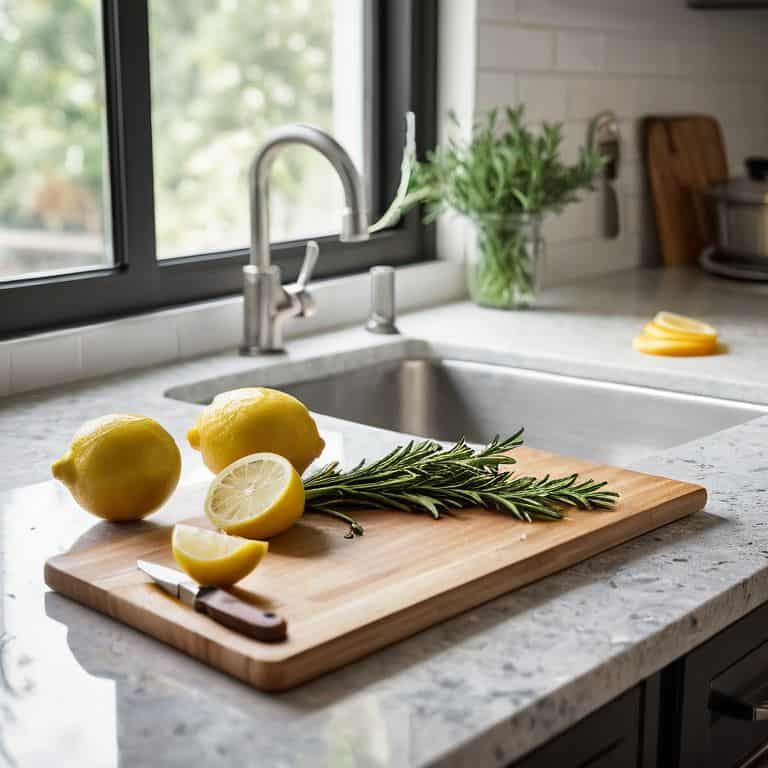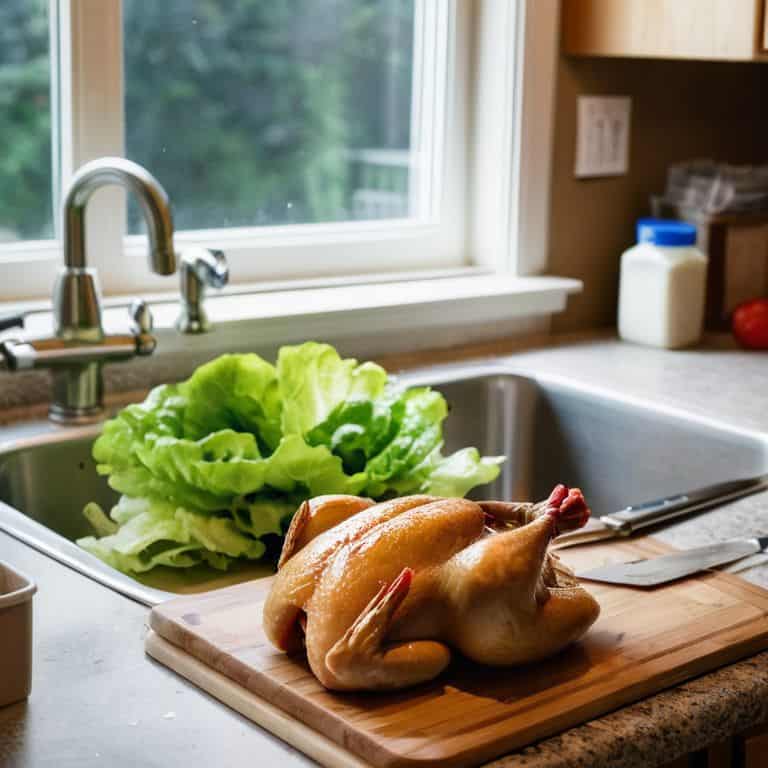As a former bush pilot, I’ve learned that safety always comes first, and that principle applies just as much to cooking as it does to flying. I still remember the time I had to make an emergency landing in the Alaskan wilderness, and the only thing that saved me from a nasty bout of food poisoning was my knowledge of how to avoid cross-contamination in the kitchen. It’s a crucial skill that every home cook should master, and yet, I’ve seen many people neglect it, putting themselves and their loved ones at risk.
In this article, I’ll share my no-nonsense approach to how to avoid cross-contamination in the kitchen, breaking it down into simple, easy-to-follow steps. You’ll learn how to identify potential hazards, create a clean and sanitized environment, and develop good habits that will become second nature. My goal is to make you feel confident and in control in the kitchen, just like a pilot in the cockpit. By the end of this guide, you’ll have a clear understanding of how to protect yourself and your family from the risks of cross-contamination, and you’ll be well on your way to becoming a safe and skilled home cook.
Table of Contents
Guide Overview: What You'll Need

Total Time: 30 minutes to 1 hour
Estimated Cost: $10 – $20
Difficulty Level: Easy
Tools Required
- Soap and water for cleaning hands and surfaces
- Sanitizing spray for disinfecting kitchen tools and equipment
- Color-coded cutting boards to separate raw foods from ready-to-eat foods
Supplies & Materials
- Separate storage containers for raw foods, such as meat, poultry, and seafood
- Cleaning cloths for wiping down kitchen surfaces, approximately 12 inches by 12 inches
- Trash can with a lid to prevent cross-contamination from waste
Step-by-Step Instructions
- 1. First, let’s start with the pre-flight check: before you begin cooking, make sure your kitchen is clean and sanitized. This means wiping down all surfaces, including counters, sinks, and stoves, with a gentle cleanser. I like to think of it as doing a quick walk-around of my aircraft, checking for any potential hazards before takeoff.
- 2. Next, _separate your ingredients_ into different categories, just like you would separate your navigation tools from your communication equipment. This means keeping raw meats, poultry, and seafood separate from ready-to-eat foods, and using different cutting boards and utensils for each. This simple step can help prevent cross-contamination and keep your kitchen running smoothly.
- 3. Now, let’s talk about personal protective equipment: in the kitchen, this means wearing gloves when handling raw meats or cleaning up spills. It may seem like a small thing, but trust me, it can make a big difference in preventing the spread of bacteria and other microorganisms. Just like how I wear my pilot’s gloves to protect myself from the elements, you should wear gloves to protect yourself from potential hazards in the kitchen.
- 4. When it comes to _food storage_, it’s essential to label and date all leftovers, just like you would log your flight hours. This helps you keep track of what you have in the fridge and ensures that you use the oldest items first. It’s also crucial to store food in airtight containers to prevent moisture and other contaminants from getting in.
- 5. Now, let’s move on to cleaning as you go: just like how I clean my aircraft after each flight, you should clean your kitchen as you go to prevent crumbs, spills, and other messes from building up. This means wiping down surfaces, washing utensils and dishes, and putting away ingredients after use. It may seem like a lot of work, but trust me, it’s worth it in the long run.
- 6. When it comes to _cooking temperatures_, it’s essential to use a food thermometer to ensure that your food is cooked to a safe internal temperature. This is especially important when cooking poultry, beef, and pork, as undercooked meat can harbor bacteria like Salmonella and E. coli. Just like how I use my aircraft’s instruments to navigate, you should use a food thermometer to navigate the world of cooking temperatures.
- 7. Finally, let’s talk about disinfecting high-touch areas: in the kitchen, this means disinfecting surfaces like faucet handles, light switches, and countertops regularly. This can help prevent the spread of bacteria and other microorganisms that can cause illness. Just like how I disinfect my aircraft’s controls after each flight, you should disinfect your kitchen’s high-touch areas to keep yourself and your loved ones safe.
Mastering Kitchen Flight

As we delve into the world of kitchen safety, it’s essential to remember that proper hand washing techniques are the foundation of a clean and hygienic environment. Just like a pre-flight checklist, washing your hands regularly can help prevent the spread of bacteria and other microorganisms. When it comes to safe food storage practices, it’s crucial to label and date leftovers, ensuring that you use the oldest items first.
In the kitchen, cleaning and sanitizing kitchen surfaces is a top priority. This includes regularly wiping down countertops, sinks, and faucets with a sanitizing solution. To take it a step further, consider implementing color coding for kitchen utensils, where you assign specific colors to different food groups, such as meats, vegetables, and dairy products. This simple trick can help prevent cross-contamination and make food preparation a breeze.
By following these tips and creating a kitchen cleaning schedule, you’ll be well on your way to mastering kitchen flight. Remember, a clean kitchen is a safe kitchen, and with a little practice, you’ll be navigating the culinary skies with ease. Whether you’re a seasoned chef or a novice cook, preventing cross contamination with pets is also vital, so be sure to keep those furry friends out of the kitchen while you’re preparing meals.
Navigating Safe Food Storage
When it comes to safe food storage, think of your fridge and pantry as the cargo hold of your kitchen aircraft. Just as you wouldn’t overload a plane with mismatched cargo, you shouldn’t overcrowd your storage spaces with improperly sealed or labeled containers. This can lead to a messy situation, much like turbulence in the skies.
To avoid this, use airtight containers and label them clearly, just as you would use checklists to ensure all pre-flight procedures are completed. This simple step helps prevent cross-contamination and keeps your kitchen running smoothly, ensuring a safe and enjoyable culinary journey.
Perfecting Hand Washing Techniques
Just like pre-flight checks, hand washing is a crucial step in ensuring a safe kitchen environment. I always tell my students that a clean pair of hands is like a clear flight plan – it sets you up for success. To perfect your hand washing technique, start by wetting your hands under warm running water. Then, apply a generous amount of soap and work it into a lather, making sure to cover all surfaces, including the backs of your hands, wrists, and between your fingers.
By following this simple yet effective hand washing routine, you’ll be able to take off into your cooking tasks with confidence, knowing you’ve minimized the risk of cross-contamination. Remember, it’s all about the fundamentals – just like navigating through friendly skies, a clean kitchen is a safe kitchen.
Plotting a Safe Course: 5 Key Tips to Avoid Cross-Contamination Turbulence

- Chart Your Cleaning Route: Designate a specific cleaning path in your kitchen to avoid zigzagging between clean and dirty areas, just like navigating through different airspaces
- Fly with the Right Gear: Use separate cutting boards, utensils, and plates for raw meat, poultry, and seafood to prevent cross-contamination, similar to how pilots use specific equipment for different flight conditions
- Maintain Safe Altitudes: Store raw meat, poultry, and seafood in sealed containers at the bottom of your refrigerator to prevent juices from dripping onto other foods, much like how pilots maintain safe altitudes to avoid turbulence
- Execute Smooth Handovers: When switching between handling different foods, wash your hands thoroughly with soap and warm water, just like how pilots follow a pre-flight checklist to ensure a safe transition
- Monitor Your Weather Brief: Be aware of the foods you’re handling and their potential to harbor bacteria, just like how pilots receive weather briefs to anticipate and prepare for potential storms
Key Takeaways: Flying High in the Kitchen
Always maintain a clean kitchen environment, just as you would prepare for a pre-flight check, to minimize the risk of cross-contamination and ensure a safe cooking space
Implement safe food storage practices, such as labeling and dating leftovers, to avoid confusion and potential foodborne illnesses, much like navigating through friendly skies with clear communication
Perfect hand washing techniques, using warm water and soap, and washing for at least 20 seconds, to prevent the spread of bacteria and other microorganisms, just as a pilot follows a strict pre-flight routine to ensure safety
Cleared for Safe Cooking
Just as a pre-flight checklist ensures a safe takeoff, a clean and mindful approach to kitchen practices can help you avoid the turbulence of cross-contamination and land safely on the plate.
Daniel Sato
Landing Safely: A Conclusion to Kitchen Flight
As we touch down on our kitchen flight plan, let’s do a quick systems check to ensure we’ve covered all the essential steps to avoid cross-contamination. We’ve reviewed the importance of cleanliness and organization in the kitchen, mastered safe food storage, and perfected hand washing techniques. By following these simple, yet crucial steps, you’ll be well on your way to creating a safe and healthy cooking environment. Remember, a clean kitchen is not just a matter of aesthetics; it’s a safety protocol that requires attention to detail and a commitment to best practices.
As you continue on your culinary journey, keep in mind that practice makes perfect. Don’t be too hard on yourself if you encounter turbulence along the way – simply adjust your flight plan and get back on course. With time and experience, you’ll become a skilled navigator of the kitchen, effortlessly avoiding cross-contamination and creating delicious, safe meals for yourself and others. So, take to the skies, er, kitchen, with confidence and remember that the art of cooking is not just about following a recipe, but about flying high on the winds of creativity and caution.
Frequently Asked Questions
What are the most common sources of cross-contamination in the kitchen?
Let’s identify the common culprits of cross-contamination. In my experience, the top sources are unwashed hands, unclean utensils, and contaminated countertops. Just like how a single bird strike can take down an aircraft, one misplaced utensil can bring down an entire kitchen’s safety record. We must be vigilant and address these sources head-on.
How can I effectively clean and sanitize my kitchen utensils and equipment to prevent cross-contamination?
Cleaning and sanitizing kitchen utensils and equipment is like pre-flight inspection – meticulous and crucial. I recommend a gentle soap and warm water for utensils, and a sanitizer solution for equipment. Regularly disinfect high-touch areas, just as you’d secure loose items in the cockpit before takeoff.
Are there any specific food handling practices I should follow to minimize the risk of cross-contamination when preparing meals?
When handling food, think of it like navigating through different airspaces – you need to follow specific protocols to avoid collisions. Separate raw and ready-to-eat foods, and label them clearly, just like you’d follow a flight plan. This simple step can help you steer clear of cross-contamination turbulence.
